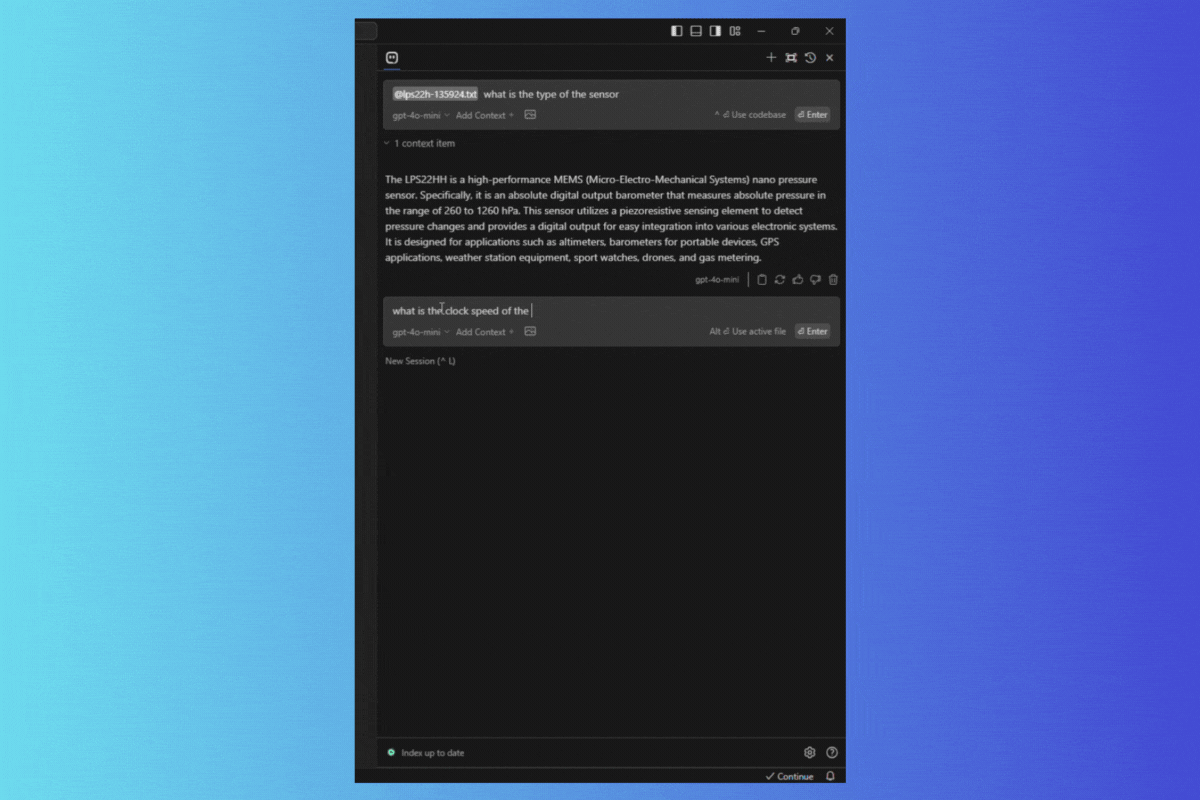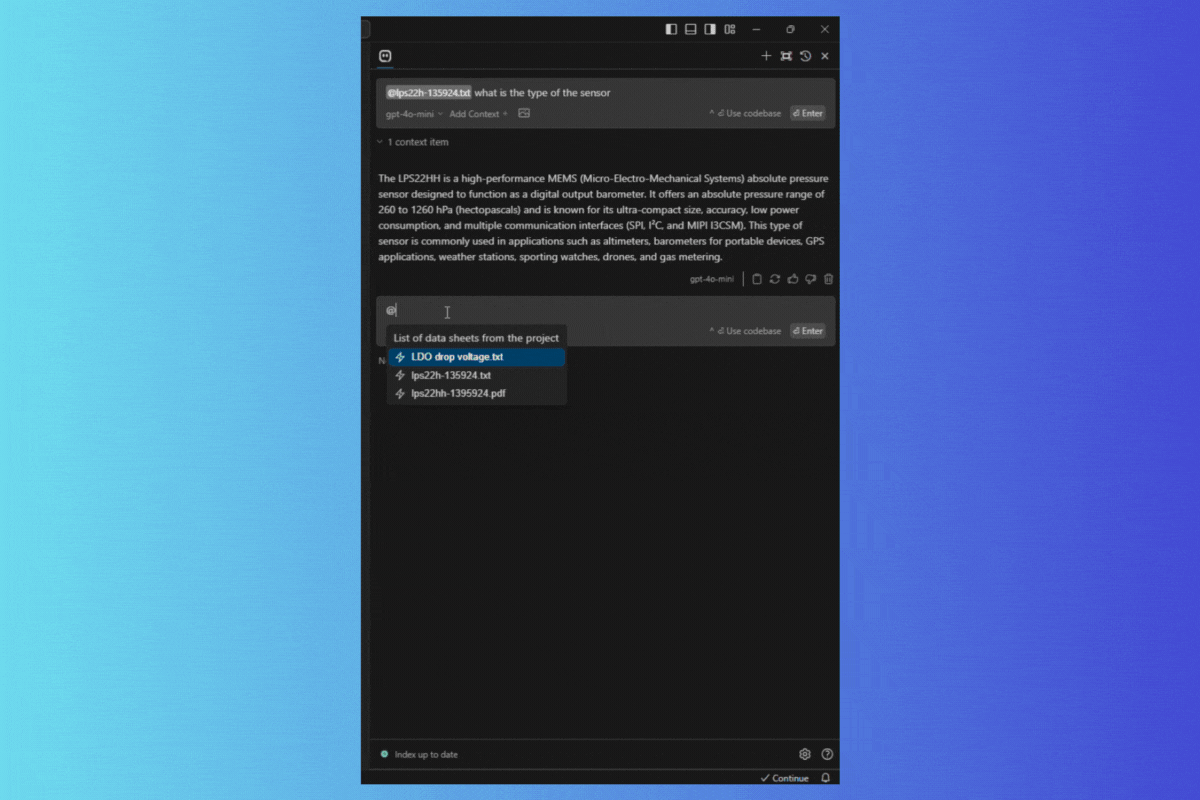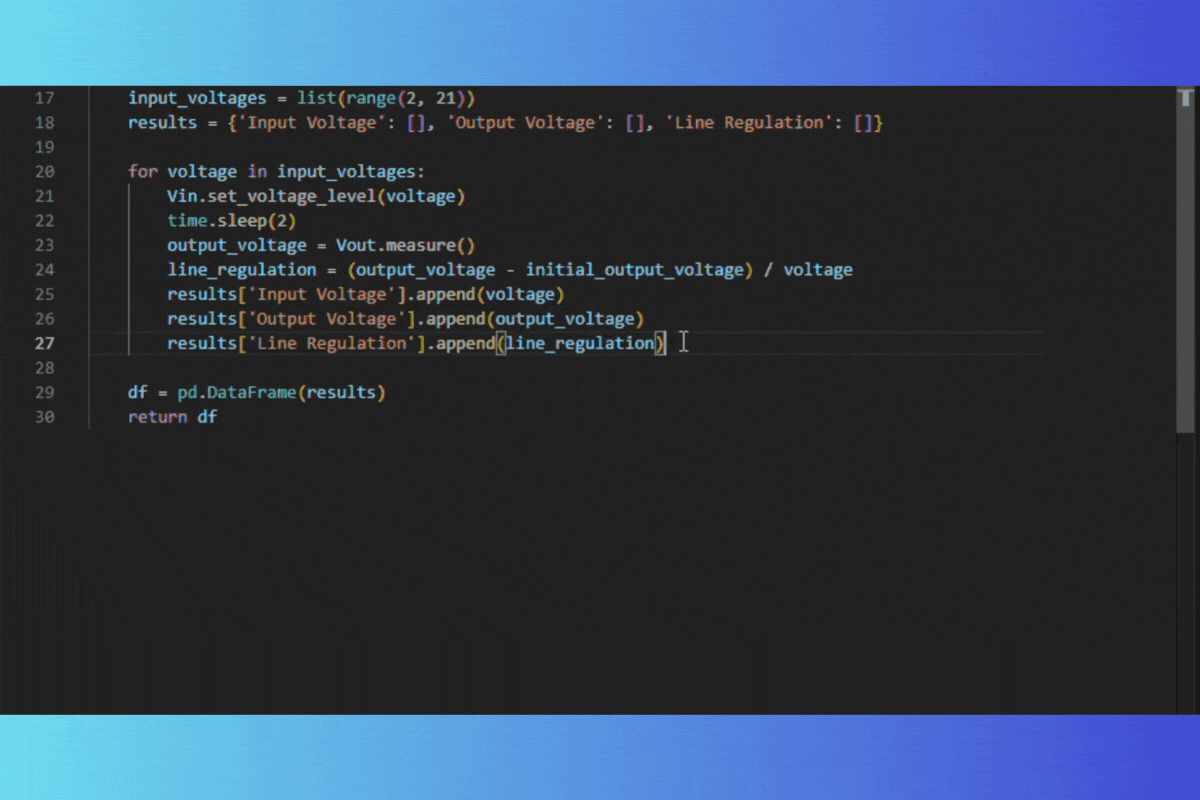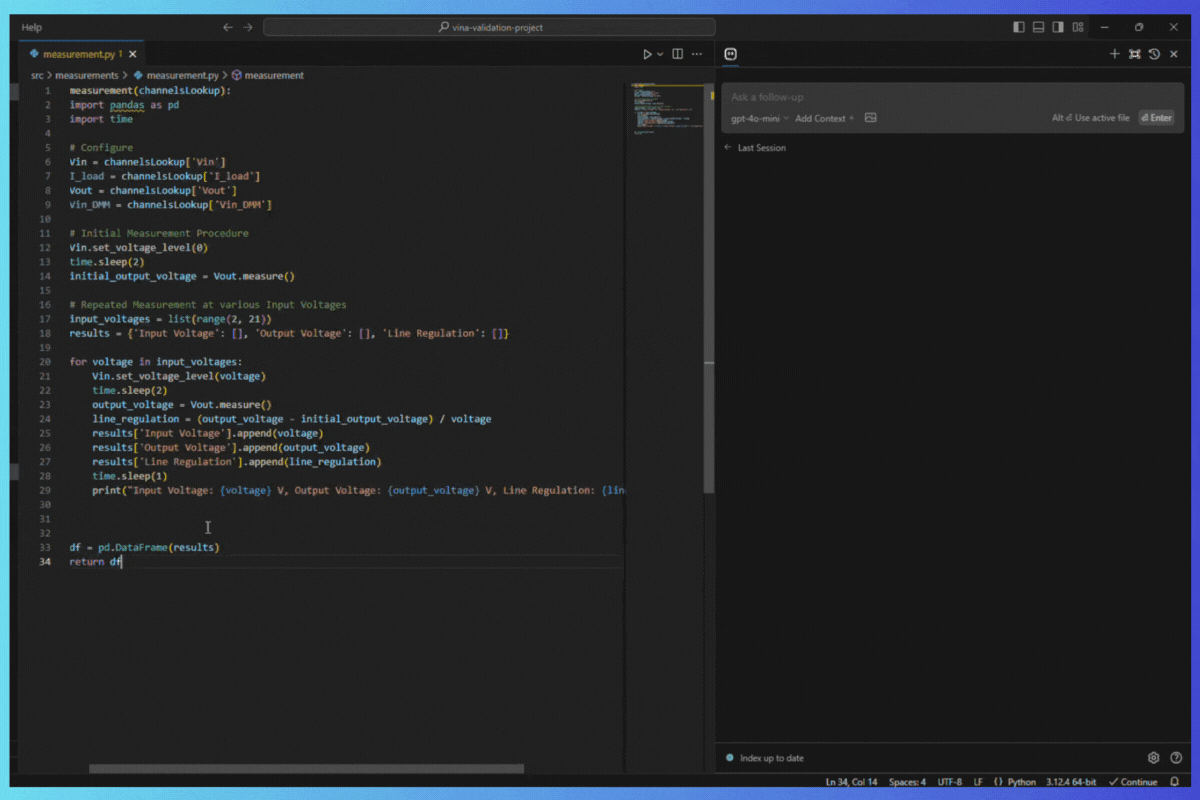How
Here are a few key features of the copilot, which was built to address the challenges in validation testing.
Data Sheet Comprehension
When programming, engineers must comb through complex datasheets to extract register settings, pin configurations, and timing requirements needed for testing. With the copilot, engineers can use natural language queries, and the AI will extract key specifications from the datasheet, such as ADC resolution or clock speed.

Register Map Comprehension
Engineers must thoroughly understand their device’s digital components when programming, such as configuring register fields for optimal operation or determining the precise timing specifications for protocols. This knowledge is essential for developing test programs. In these cases, the copilot guides engineers through these details, providing critical support in digital programming.

Understanding the Environment
Engineers develop programs that must operate seamlessly within their specific automation framework, tailored to their devices, instruments, and organizations’ testing methodologies. This proprietary knowledge is crucial, and the copilot can leverage it to guide engineers effectively using the specific application.
Intelligent Code Completion
In semiconductor projects, engineers must manually write codes with complex syntax that requires looking up datasheets and hardware specifications. The extension analyzes the code’s context and suggests precise, context-aware completions that align with the program.

Automated Documentation
Engineers must consistently document hardware specifications, register maps, and driver-level interactions to maintain up-to-date documentation across different codebase versions for reference. The copilot automates documentation generation directly from the code, ensuring that details about hardware specifications and configurations are aligned with the current implementation.
Debugging Assistance
Debugging code in semiconductor development, especially with hardware drivers, can be complex. Bugs may arise from improper configurations, timing issues, or even overlooked register settings. The AI copilot can detect common hardware-specific problems, such as incorrect peripheral configurations or timing mismatches, by offering real-time suggestions tailored to the semiconductor environment.

The AI Copilot addresses the core challenge V&V engineers face by balancing programming demands with their primary role of device validation. By streamlining complex coding tasks, automating documentation, and providing intelligent debugging support, it lets engineers focus more on testing and validation.
Unlocking New Possibilities with AI and Automation
As we continue to refine and expand the Copilot’s capabilities, our commitment remains to enable semiconductor teams leverage automation and AI to accelerate quality and efficiency throughout the validation processes.
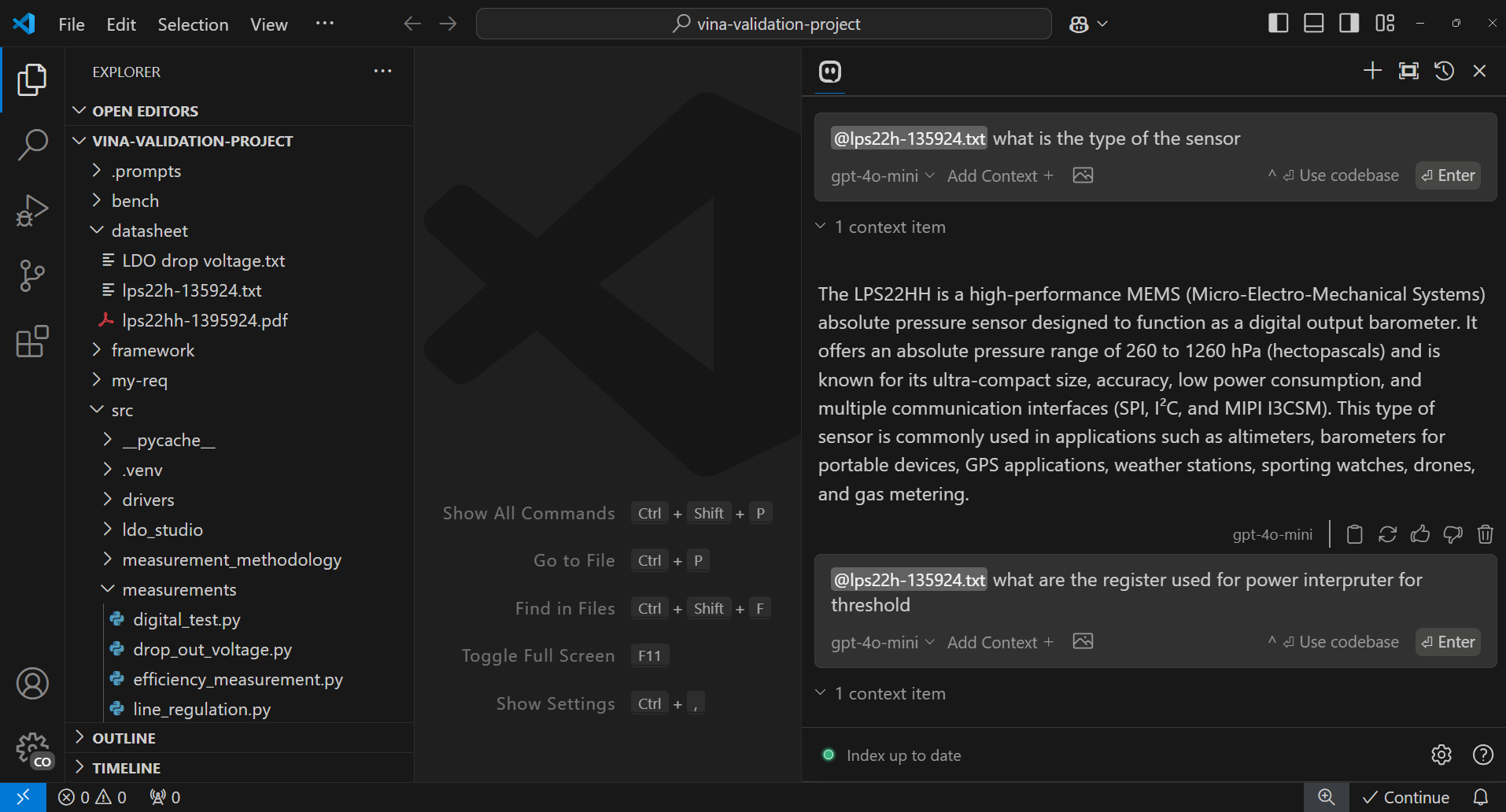 The AI Copilot extension for VSCode can be seen on the right of the VSCode window
The AI Copilot extension for VSCode can be seen on the right of the VSCode window